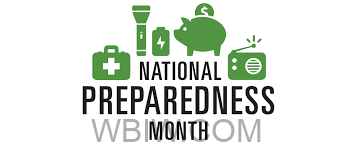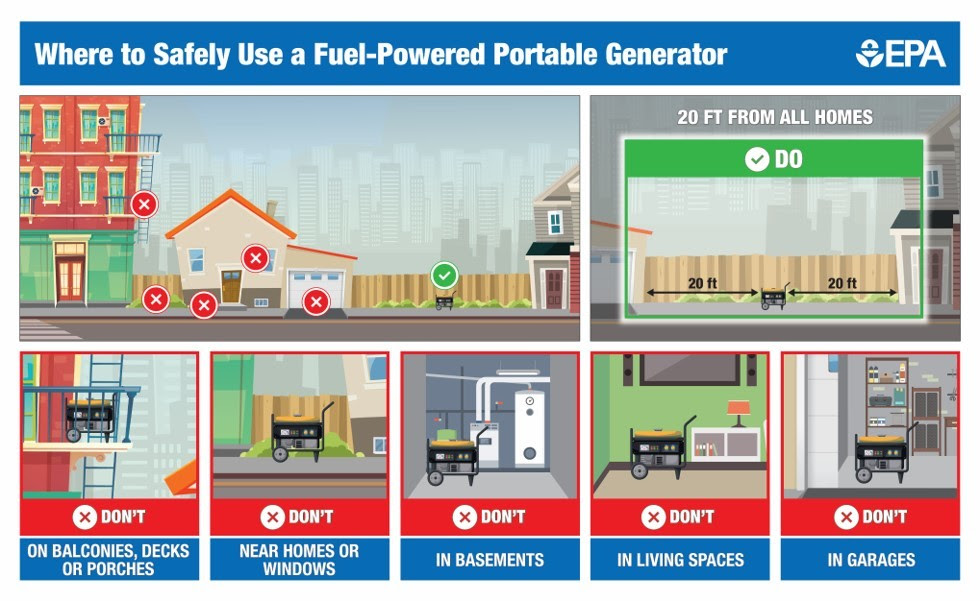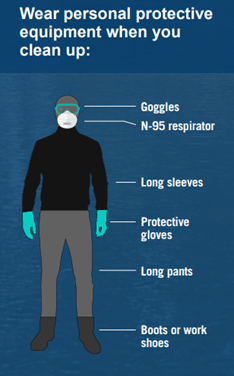
INDIANA – National Preparedness Month is an observance each September to raise awareness about the importance of preparing for disasters and emergencies.
Did you know that emergencies and disasters can affect indoor environments by worsening existing indoor air quality issues and creating new ones? Since we spend most of our time indoors, don’t forget to consider your indoor air quality when planning for disasters.
Preparing for disasters can help protect you and your family’s health. No matter where you live, consider preparing a family emergency supply kit that includes some essentials that you may need when disaster strikes.
See below for preparedness tips to protect indoor air quality and health during and after disasters.
Tip 1: Prevent carbon monoxide poisoning from portable generators during power outages
Portable generators that run on gasoline, natural gas, or kerosene emit toxic fumes, including carbon monoxide (CO). CO poisoning can be fatal.
Learn how to safely use a portable generator and make sure your home is equipped with one or more functioning CO alarms.
NEVER use portable generators indoors – Place them outside and at least 20 feet from buildings.

Tip 2: Be Smoke Ready! Prepare now to reduce your family’s exposure to wildfire smoke
Filtering the air in your home removes fine particles from wildfire smoke. It’s a key part of being Smoke Ready and can help you and your family breathe easier during a smoke event.
Plan how you will filter your indoor air before a wildfire. Consider upgrading to higher-efficiency heating, ventilation, and air-conditioning (HVAC) filter and/or purchasing a portable air cleaner.
- Install a high-efficiency filter, preferably rated Minimum Efficiency Reporting Value (MERV) 13 or higher if your central HVAC system can safely use one.
- Purchase a portable air cleaner that is the right size for the room where you will use it. Make sure it does not produce ozone.
- If portable air cleaners are not available or affordable, you may choose to make a do-it-yourself (DIY) air cleaner. Learn more about how to make your own DIY air cleaner.
- Consider purchasing N95 respirator masks for times when you must go outdoors the smoke.
Learn more about what you can do now to protect your family from wildfire smoke.
Tip 3: Gather protective equipment and other supplies for safe flood cleanup and recovery
If you live in an area where flood risk is high, be prepared for the hazards, like mold, that is found in a flooded home. You should wear protective clothing and gear when working in a home that has been flooded, but these items may not be available immediately after a disaster.
Plan ahead by adding these items to your preparedness supplies:
- N-95 respirators,
- goggles,
- long pants,
- long-sleeve shirts, and
- gloves.
N-95 respirators can protect you from breathing in dust, microorganisms, and mold spores. You can usually find them at hardware stores and online.

Flood water can make the air in your home unhealthy.
- Learn how to clean your home after a flood to protect your family’s health.
- Check out EPA’s Flooded Homes website for step-by-step guidance and videos for safely cleaning up your home and recovering from a flood.




